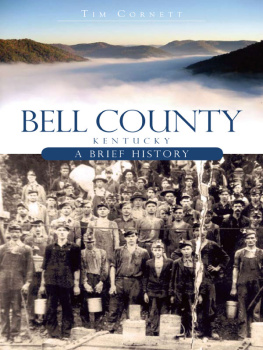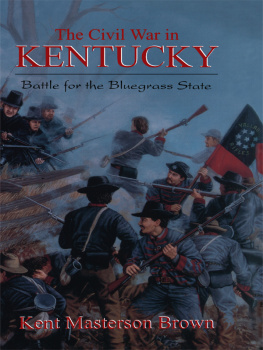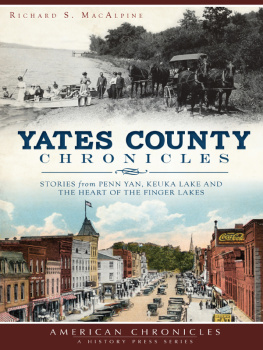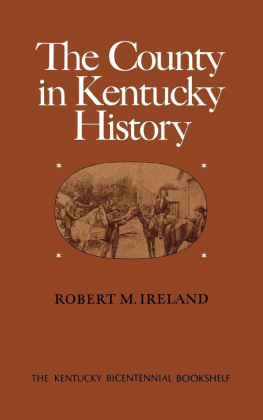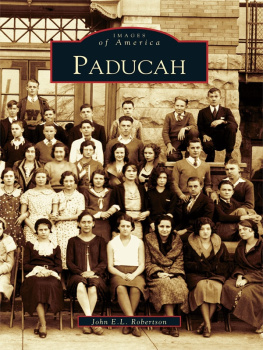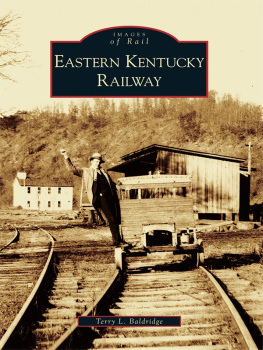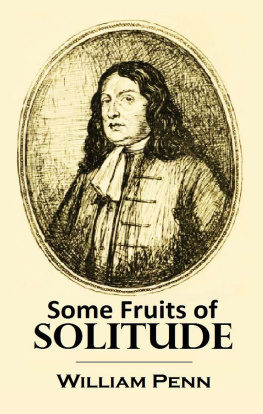Due to variations in the technical specifications of different electronic reading devices, some elements of this ebook may not appear as they do in the print edition. Readers are encouraged to experiment with user settings for optimum results.
Copyright 2016 by The University Press of Kentucky
Scholarly publisher for the Commonwealth, serving Bellarmine University, Berea College, Centre College of Kentucky, Eastern Kentucky University, The Filson Historical Society, Georgetown College, Kentucky Historical Society, Kentucky State University, Morehead State University, Murray State University, Northern Kentucky University, Transylvania University, University of Kentucky, University of Louisville, and Western Kentucky University.
All rights reserved.
Editorial and Sales Offices: The University Press of Kentucky
663 South Limestone Street, Lexington, Kentucky 40508-4008
www.kentuckypress.com
Unless otherwise noted, photographs are from the authors collection.
Cataloging-in-Publication data is available from the Library of Congress.
ISBN 978-0-8131-6771-8 (hardcover : alk. paper)
ISBN 978-0-8131-6772-5 (epub)
ISBN 978-0-8131-6773-2 (pdf)
This book is printed on acid-free paper meeting the requirements of the American National Standard for Permanence in Paper for Printed Library Materials.

Manufactured in the United States of America.
| Member of the Association of American University Presses |
Introduction
When a Confederate officer scribbled in his journal after the Second Battle of Cynthiana that Morgans men were plundering & pillaging... the best rebel town of our native state, he was expressing a widely held perception that, in the Bluegrass, Cynthiana was a Rebel town. This reputation was earned in the early years of the war after a series of implicating events: the county judge, county clerk, sheriff, and newspaper editor were arrested for being southern sympathizers; one of the very first Kentucky Rebel volunteer companies was from Harrison County, marching off to war as a Confederate flag was displayed on the courthouse flagpole; and the majority of Harrison County recruits joined the Confederate army. At this divisive time, a citizen admitted: It is not safe for a man to talk about or in favor of the Union. The state representatives from Harrison County were known to be prosouthern by their speeches during the neutrality period. Rep. Lucius Desha fled behind Confederate lines to avoid being arrested, only to be indicted for treason on returning to the state. Cincinnati newspapers and a US representative from Bourbon County pointed to the arrest of about sixty citizens to support their contention that Cynthiana was full of lurking Rebels and described the town as a pestiferous Secession hole. A militia officer, writing state officials in October 1861, referred to Cynthiana, that infernal hole of rebellion. And in correspondence with President Lincoln about shipping guns through Harrison County, the clerk of the Kentucky state court of appeals warned, Cynthiana is a dark hole of traitors. Even after the war ended, complaints surfaced that some candidates for office in Harrison County were former stay-at-home rebels.
The actual support for secession in the county was more nuanced. A March 1861 petition to the governor signed by over five hundred citizens opposed a proposed state convention to consider secession. The next month, pro-Union candidates were elected from the county to attend a border state convention. Those who advocated staying in the Union, somewhat suppressed as prominent southern sympathizers swayed public opinion, later stepped forward, especially after vigilant home guards and Union soldiers silenced citizens backing secession through martial law and arbitrary arrests. Then, local government shifted into the hands of pro-Union candidates. Eventually, two Union companies were recruited, and many African Americans were enrolled as the war progressed, but their numbers still fell short of the Rebel enlistments.

Map 1. Most of the roads and villages on this modern Harrison County highway map existed during the Civil War. Adapted from General Highway Map, Harrison County, Kentucky, Kentucky Transportation Cabinet, Department of Highways, Division of Planning, Frankfort, n.d. [ca. 1995].
One year after the Civil War ended, the editor of the Cynthiana News, A. G. Morey, wrote the following editorial to celebrate the resolve of Cynthianas citizens to rebuild the destruction caused by war. Although he exaggerated Cynthianas notoriety and military importance, he sensed the ordeal of the towns peaceful inhabitants as unwilling participants and witnesses to a bitter sectional war:
No place in Kentucky attracted so much attention and so much interest, during the war, from both parties, as our little city of the maidens. No sooner had the telegraph communicated the news of an invasion of Kentucky either from the direction of the Ohio, or the Cumberland, than the minds of all were directed toward Cynthiana. It seemed to elicit the cupidity of the Federal as well as the Confederate soldier, and no raid in Kentucky was undertaken, or prosecuted to any considerable extent, that did not contemplate in its course, or its objective point, the town of Cynthiana.
Map 2. Map showing the area of military operations in the vicinity of Harrison County. Atlas to Accompany the Official Records of the Union and Confederate Armies (18911895) (Washington, DC: US Government Printing Office, 18911895), 349.
We need not be surprised that a place, which had gained so enviable a notoriety, should, in the varying success of contending forces, be made the theater of actual war, and feel the horrors, which the collision of two hostile bodies of infuriated men, entails upon its peaceful inhabitants.
Not only were heard, at one time, within its once quiet streets, the din of trampling hoofs of cavalry, and the cries of the wounded and the dying; and the shrieks of terrified women and children; but the fierce flames of a devouring conflagration swept over the devoted little city, laying in ashes its stores and its dwellings, and burying beneath their ruins the savings of their industry, and their dearest hopes.
But the men of Cynthiana, though they had sustained most fearful losses by the ravages of the sword, and the still more terrible scourges of the devastating fire which encircled the town yet were not hopelessly discouraged. But little more than a year has elapsed, since the last page of the story of our great war was turned and already Cynthiana has exhibited signs of reinvigoration and restoration to its former prosperity. Where the fiery element raged the fiercest, now may be seen buildings, vying in magnificence of structure and costliness of material, some of the best houses, whose stone fronts and gigantic proportions, adorn the populous cities of the West.


